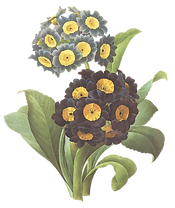Sunny Flowers
Leaving the Rocky Mountains on a cross-country drive, I wasn’t looking forward to the slog across mid-America. With the flat, straight roads stretched before me, the blue sky took on an endless quality. In the distance, a patch of gold opened up and, almost like a mirage, I was surrounded by a magical field of sunflowers.
Cheery yellow heads on tall fuzzy green stalks greeted me like friends. Their golden hair and big, dark faces seemed to nod as I drove by. It was as though Kansas, The Sunflower State, knew it needed to send out an entourage for the weary traveler.
There’s just something about a sunflower. Simple. Sweet. Joy.

This North American native, Helianthus can be found in all 50 states and Canada. Ranging in size from “Teddy Bear” a 15” fuzzy friend to more than 16 feet, sunflowers serve as a food source for birds, cattle and even humans. The seeds are grown for both ‘meat’ and oil. While we usually think of Helianthus annus, the yellow petal dark brown seed type, there are 70 varieties that range in color from pale yellow to maroon petals and seed heads that come in all varieties from black to yellow.
Classified as an annual, this plant often self-sows and can come back year after year. In some mid-West states they can even crowd out other plants and therefore considered invasive. If you have ever grown the wildflower variety, Black-eyed Susan, you know how they can take over an area of your yard.
A couple years back I planted a sunflower variety that said it was 4’ but grew to over 7’ - so read the package carefully. The seeds can be planted right in the ground as soon as the ground warms in late spring. The flowers need full sun to do well. While they are forming, the flower head is said to literally follow the sun throughout the day. Once the petals come out, the heads all face east. That may be why a field all looks like they are facing you. In fact, some people say their faces ‘speak’ to them and the flower has often been depicted in art – most famously in Van Gogh’s “Sunflowers” oil painting series that recently sold for $39 million.
If you have an opportunity to pick up a few on sale at a nursery now, they could still be planted and thrive through most the fall, until a killing frost. (Be sure to keep watered in the August heat.) The flower is a popular pollinator for birds and bees and are a favorite stop for the American gold finch who looks delightful perched on the seed head.
To harvest the seeds for food, you must let the seeds dry in the head until the back part turns to wheat or brown color. If you find the birds are getting too much of the meat, you can cut the heads and dry them indoors hanging in a nice airy spot. If you rake your hand or a fork over the heads, they should fall right out when they are ready.
If you don’t have the time or space to grow sunflowers, don’t let that stop you from picking up some at a local farmer’s market and bringing them home to brighten a room or give to a friend who may need a little boost.
Sunflower Facts (from the National Sunflower Association):
The scientific name for sunflower come from the Greek language= helios “sun” anthus “flower”
The largest sunflower head was recorded in British Columbia and measured 32” across
The tallest sunflower recorded was in the Netherlands and measured 25’ 5.4” tall
The largest sunflower field is in Tuscany Italy
Who knows what may lie around the next corner? There may be a window somewhere ahead. It may look out on a field of sunflowers.


















